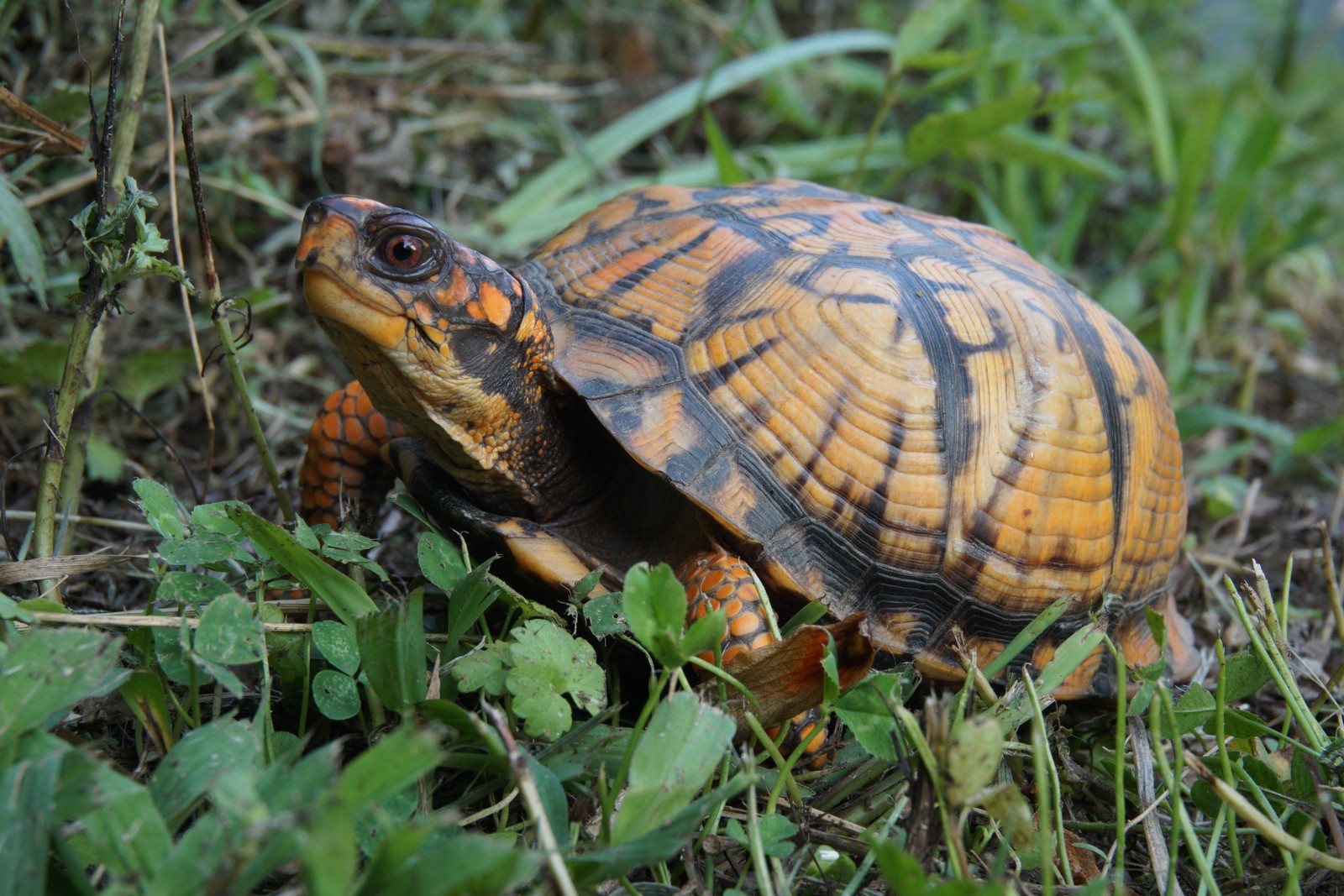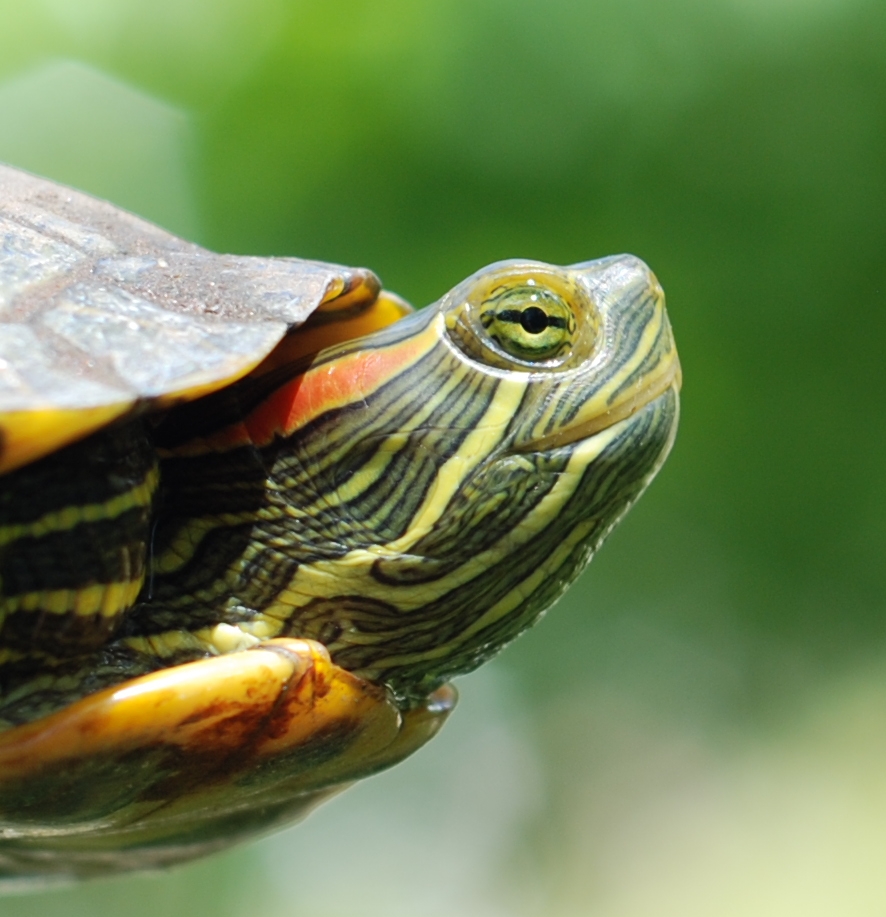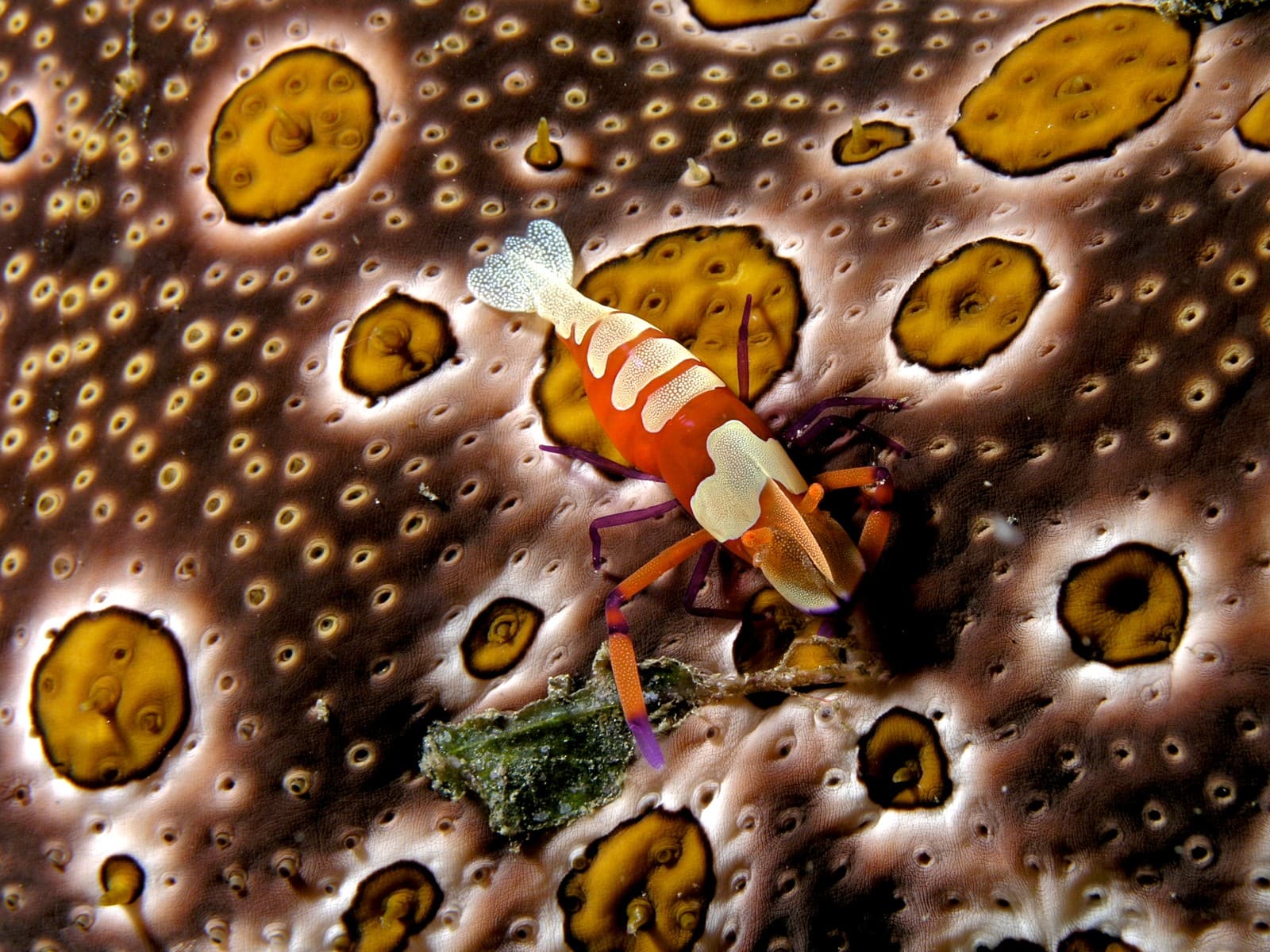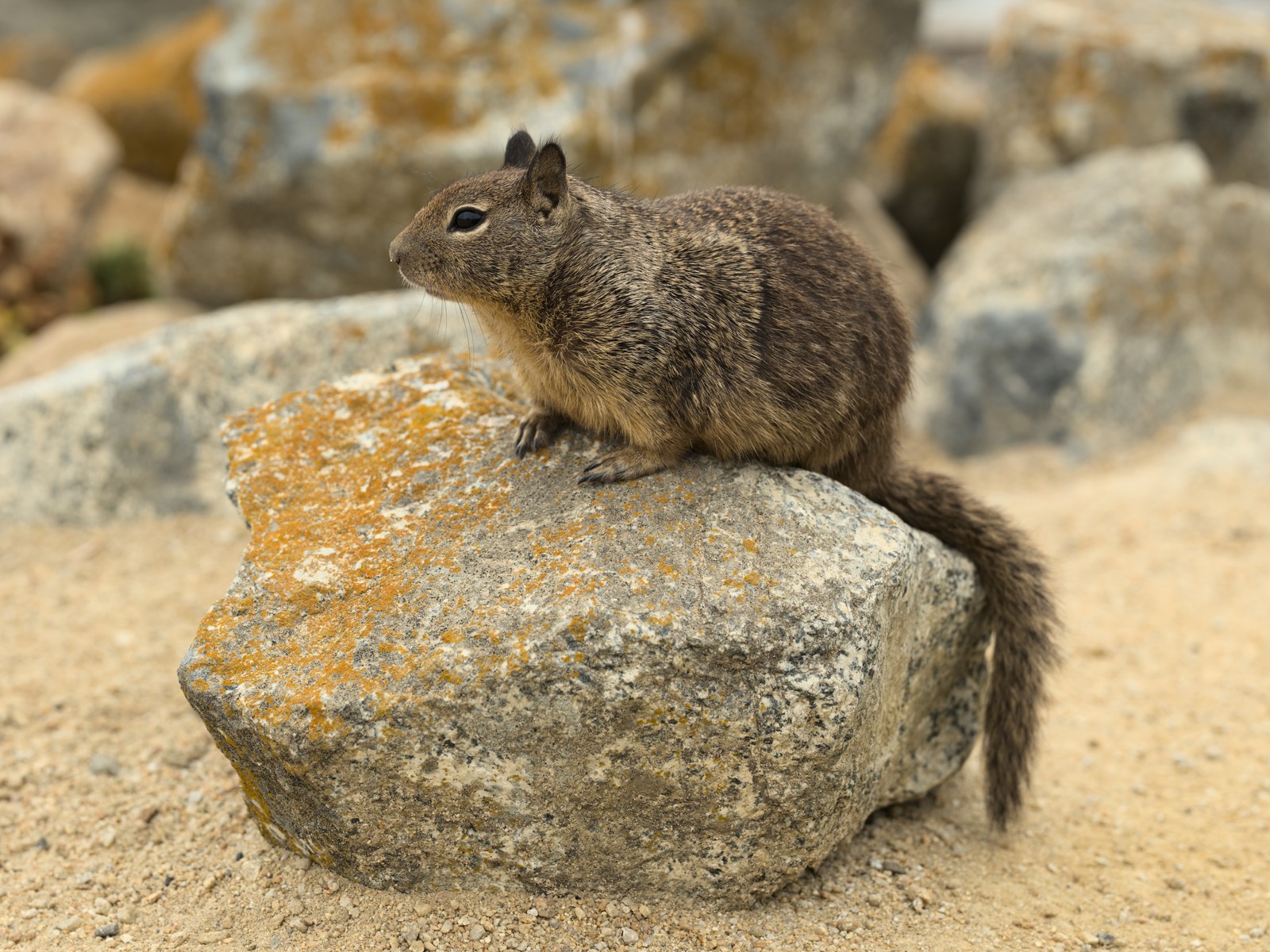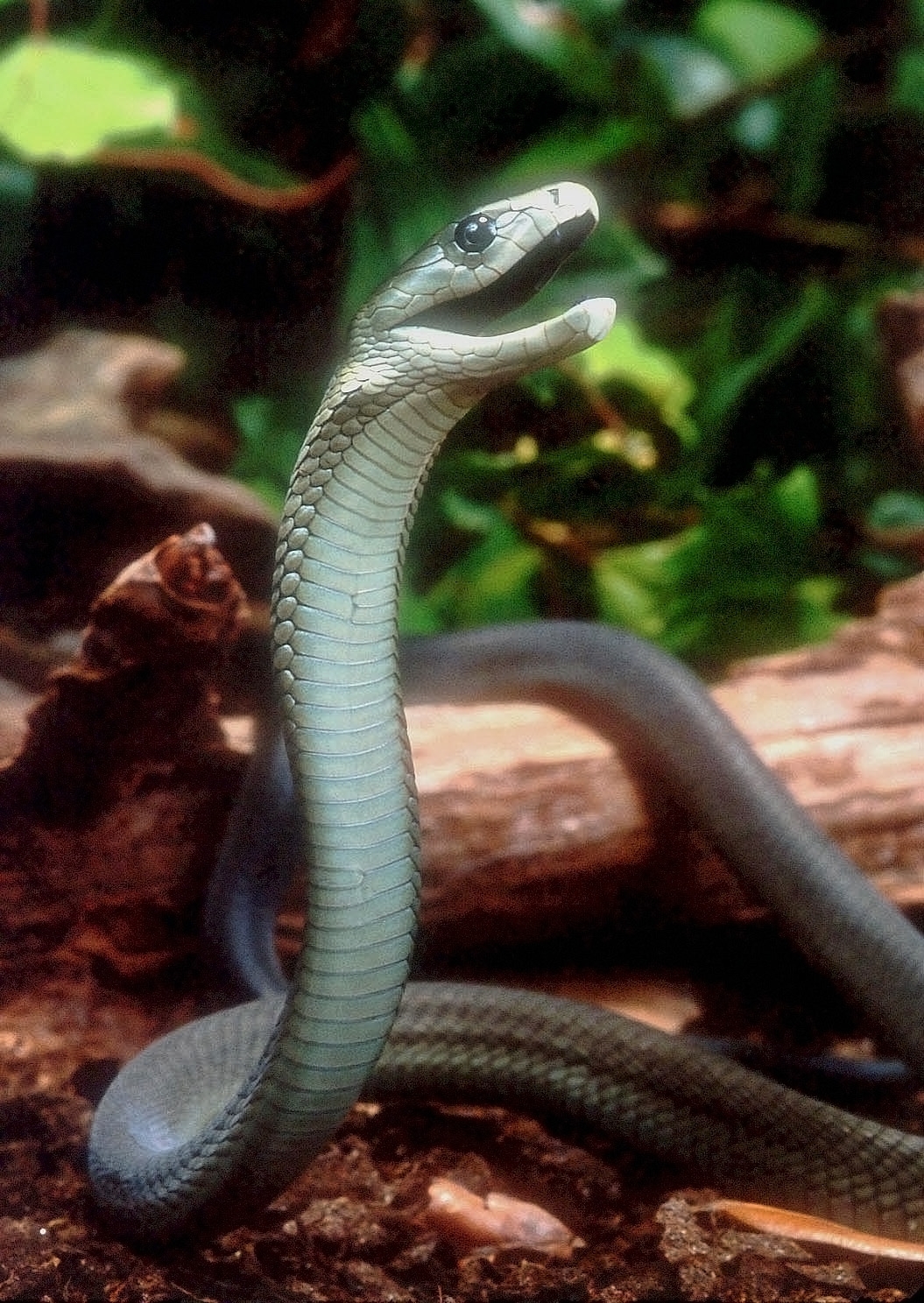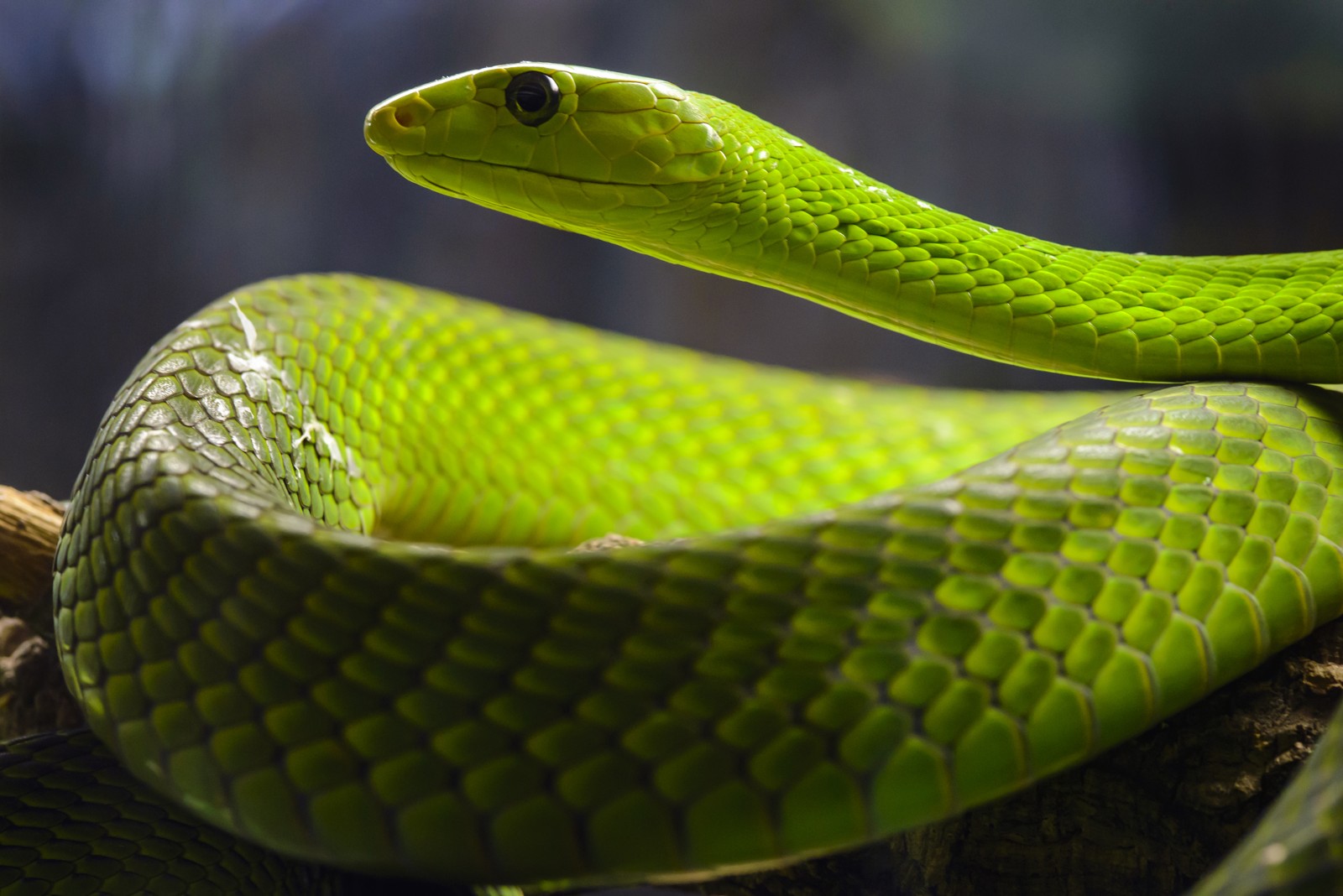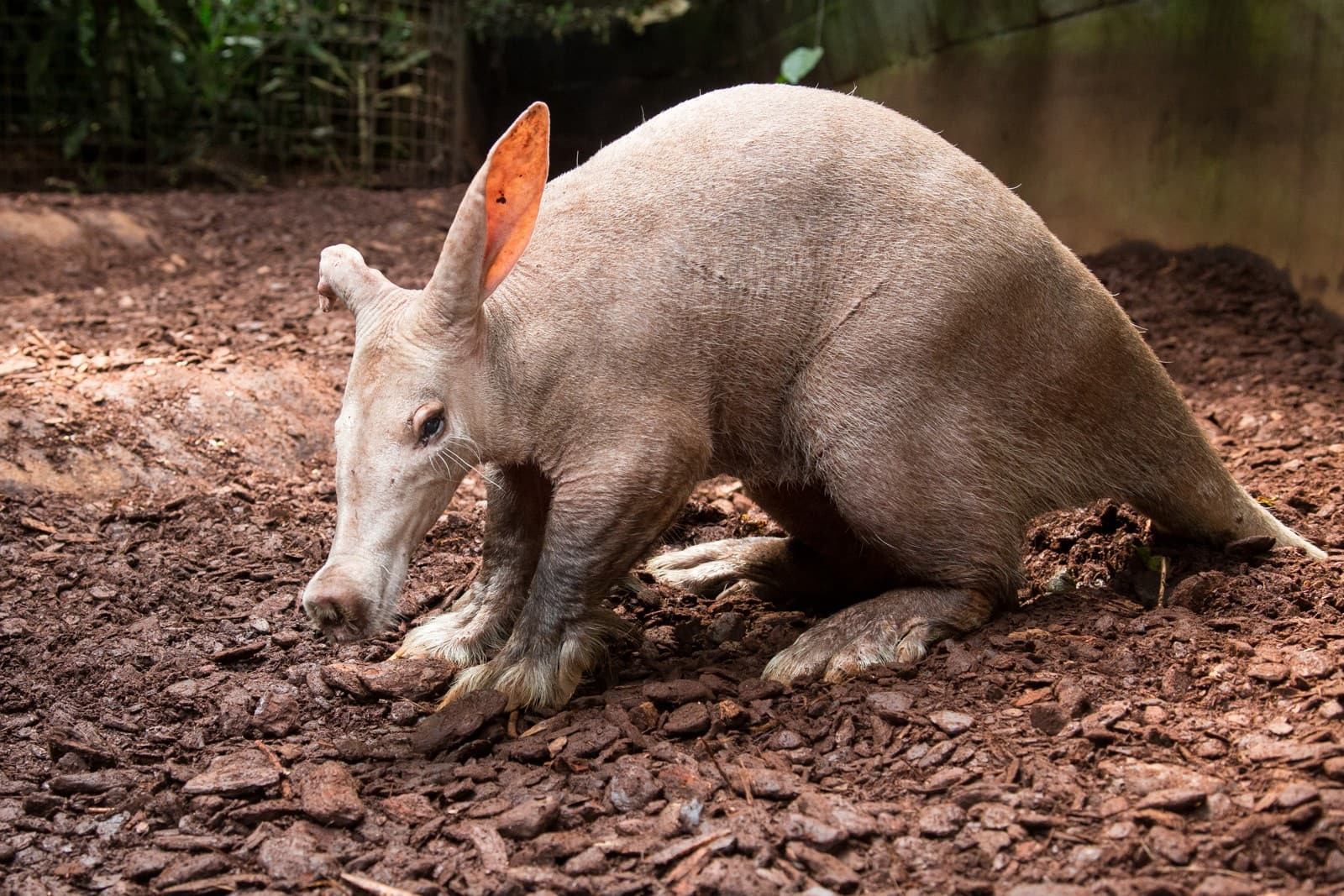Painted Turtle vs Red-Eared Slider: A Complete Comparison
When comparing the Painted Turtle vs Red-Eared Slider, these popular freshwater species share many characteristics but display distinct differences in size, markings, and habitat preferences. Red-Eared Sliders typically grow larger, reaching 12 inches (30.5 cm) in length, while Painted Turtles usually max out at 10 inches (25.4 cm). Both species are among North America’s most common aquatic turtles, though Red-Eared Sliders have become established worldwide through the pet trade.
The most notable distinction lies in their appearance: Painted Turtles showcase intricate yellow and red patterns on their shells and skin, while Red-Eared Sliders are characterized by their distinctive red patches behind each eye. These differences, along with their specific care requirements, make each species unique in both wild and captive settings.
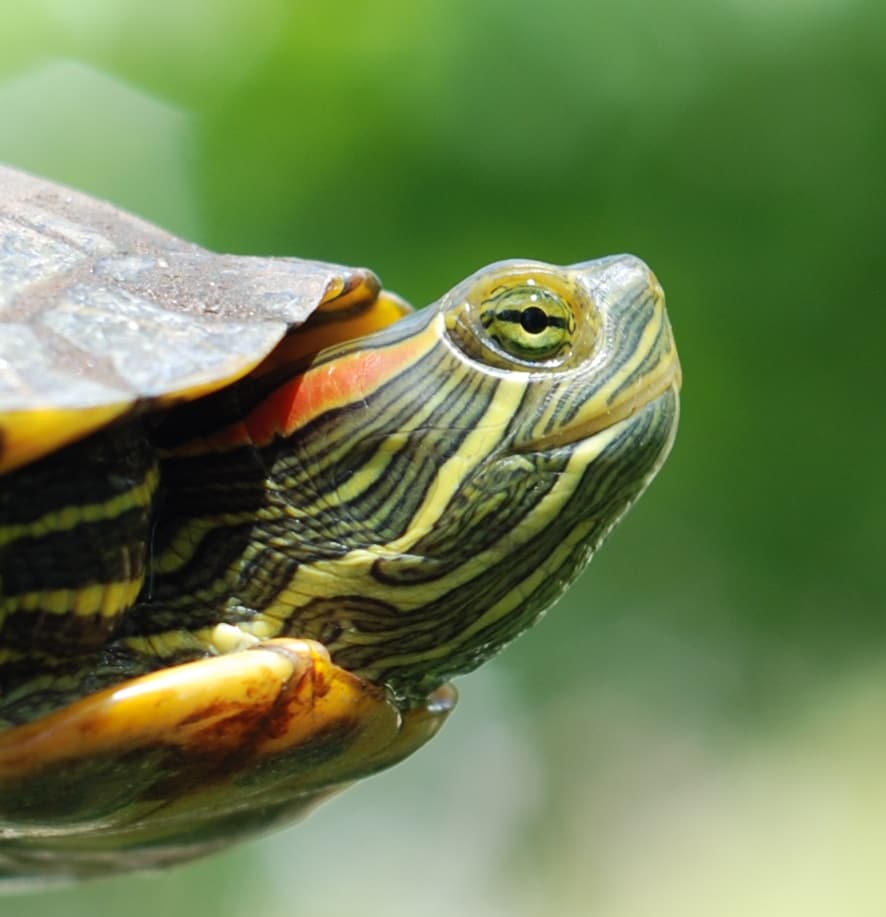
© Jarek Tuszyński / CC BY 4.0
The Painted Turtle displays its signature colorful markings, with vibrant yellow stripes along its neck and distinctive red patterns on its plastron (bottom shell). These natural markings serve as excellent camouflage in their native aquatic habitats.
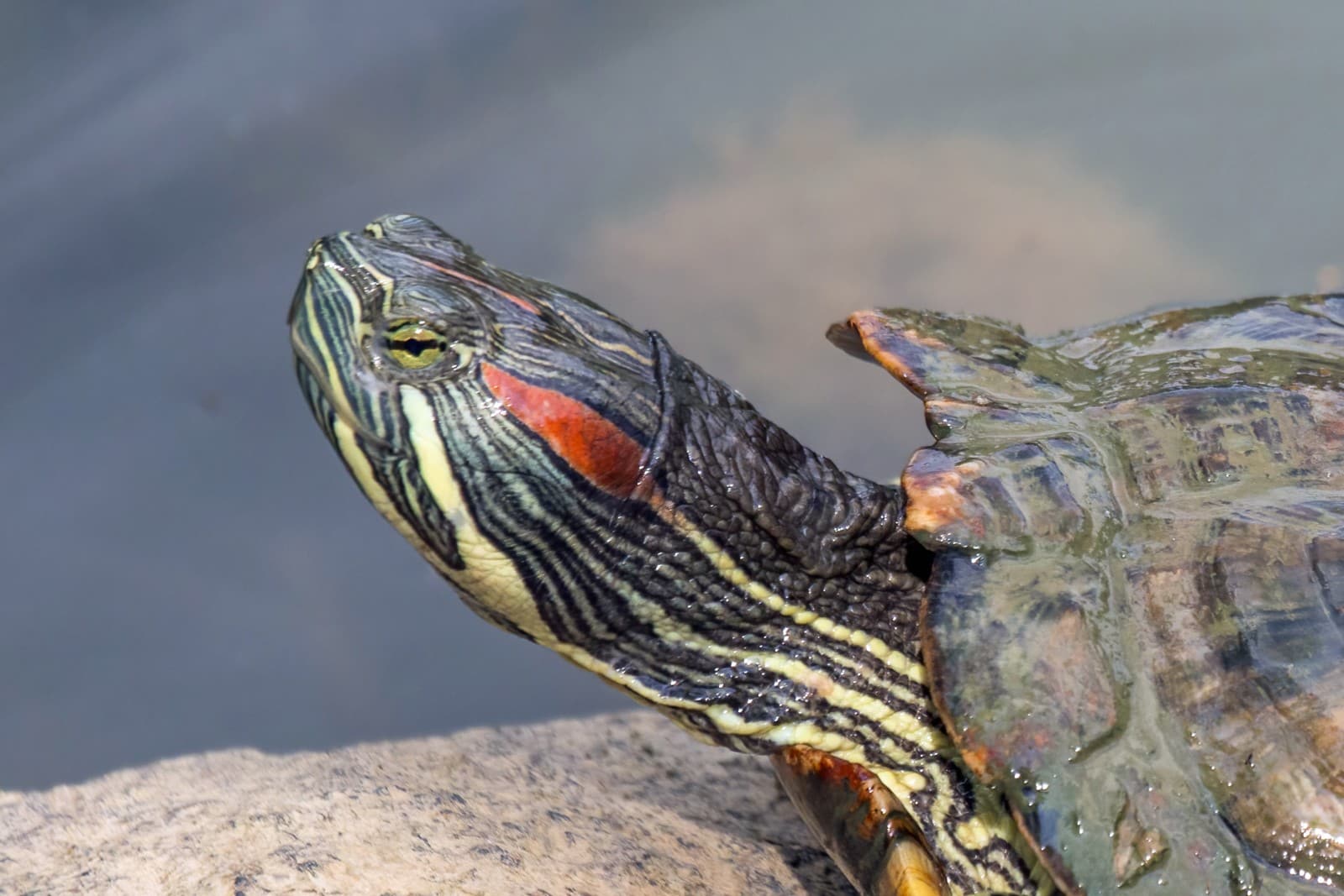
© Charles J. Sharp / CC BY-SA 4.0
The Red-Eared Slider exhibits its namesake red patch behind the eye, along with distinctive yellow striping on its face and neck. This species’ olive-green coloration provides excellent camouflage in its preferred aquatic environments.
Key Differences Between Painted Turtles and Red-Eared Sliders
| Feature | Painted Turtle | Red-Eared Slider |
|---|---|---|
| Size | 4-10 inches (10-25.4 cm) | 6-12 inches (15.2-30.5 cm) |
| Distinctive Marking | Red-orange plastron patterns | Red patches behind eyes |
| Lifespan | 20-30 years | 20-30 years |
| Native Range | North America | Southern US/Northern Mexico |
| Basking Temperature | 75-85°F (24-29°C) | 85-95°F (29-35°C) |
| Adult Weight | 0.5-1.5 lbs (0.23-0.68 kg) | 1-2 lbs (0.45-0.91 kg) |
Habitat and Distribution
Painted Turtles naturally occur throughout North America, from southern Canada to northern Mexico, preferring slow-moving freshwater bodies with soft bottoms and abundant aquatic vegetation. They thrive in ponds, marshes, and slow sections of rivers where basking spots are readily available.
Red-Eared Sliders originally inhabited the Mississippi River Valley and Gulf Coast regions but have become established worldwide due to pet releases. They adapt well to various aquatic environments but prefer waters with:
- Dense vegetation
- Multiple basking sites
- Water depths of 4-6 feet (1.2-1.8 m)
- Abundant food sources
Behavior and Temperament
Both species exhibit similar behavioral patterns, but notable differences exist:
Painted Turtles:
- More shy and cautious around humans
- Less aggressive toward tank mates
- Excellent swimmers but spend less time in deep water
- More selective eaters
Red-Eared Sliders:
- Generally more outgoing and active
- Can show territorial behavior
- Excellent climbers and swimmers
- More opportunistic feeders
Care Requirements and Pet Considerations
When choosing between these species as pets, consider these factors:
Tank Size:
- Painted Turtles: Minimum 50 gallons (189 L)
- Red-Eared Sliders: Minimum 75 gallons (284 L)
Water Quality:
- Both species require efficient filtration
- Water temperature: 75-80°F (24-27°C)
- Regular partial water changes (25% weekly)
Diet:
- Painted Turtles: More carnivorous when young, becoming omnivorous
- Red-Eared Sliders: Primarily carnivorous when young, mostly herbivorous as adults
Health and Lifespan
Both species can live 20-30 years with proper care, though some individuals may survive longer. Common health concerns include:
- Shell rot
- Vitamin A deficiency
- Respiratory infections
- Parasitic infections
Regular veterinary check-ups and proper husbandry practices help prevent most health issues. Both species require UVB lighting and proper basking temperatures to maintain optimal health.
Conservation Status
While neither species is currently endangered, habitat loss and competition from invasive species pose ongoing challenges. Red-Eared Sliders are considered invasive in many regions outside their native range, impacting local ecosystems and competing with native turtle species for resources.
Conservation efforts focus on:
- Habitat preservation
- Population monitoring
- Control of invasive populations
- Public education about responsible pet ownership
